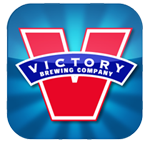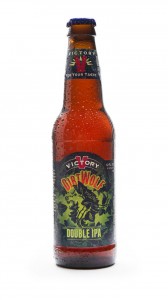
“Last week was extremely painful,” said brewery co-founder Bill Covaleski. “This 12-year-old piece of equipment has worked great for 12 years. You assemble it in a new location and [stuff] doesn’t want to work.”
Everything else, he added, from brewing clarification to fermentation has been going perfectly. But for the first three weeks of January, Victory was without bottling capabilities. It’s better now, but still not perfect.
It’s a problem the company is working diligently to resolve and put in the past. January was made rough because of the issue paired with bad weather, he said, but the company bounced back in February, growing shipments 43 percent over the same month in 2013.
There’s no room for roadblocks like that, even in their shiny new 140,000 sq. ft. facility on 42 acres in Parkesburg, Pa.. The brewery has an initial capacity of 225,000 barrels and could eventually produce more than 500,000 barrels annually.
Victory, behind a lineup of familiar brands as well as one newer brew that could potentially take the portfolio’s top spot, is using its increased capacity — Parkesburg more than doubles current capabilities — to better serve its existing 34 markets with more beer going forward, rather than spur new market access. That is to say, the company intends to grow, but it plans to do so where it is: upward, not outward.
That, in part, is why the move was so close to home (continued access to water from the Brandywine Creek was another huge factor).
“We didn’t stray far from home because we feel our home really is our future,” said Covaleski.
This strategy is in contrast to the expansion efforts of other big-name craft breweries, like Oskar Blues, Sierra Nevada, New Belgium, Lagunitas and Stone, which all have either opened facilities across the country from their headquarters, or are planning to do so.
By Victory’s calculations, staying close to home should work out just fine, though. The company is forecasting volume and sales growth of 10-15 percent in 2014, up from the 102,973 barrels it produced last year. It also plans to introduce three new products packaged in 22 oz. bottles before the end of the second quarter.
While primary growth will be driven in its existing footprint, that doesn’t mean the company is done adding territories. It’s in the process of adding distributors in Arizona and Kentucky and Covaleski said “another 3-4 markets” could be in the cards for this year as well. But the company, as of now, doesn’t have national ambition.
“I’m going to shoot from the hip and say no,” said Covaleski, adding that licensing costs and restrictive wholesaling options could prevent the company from entering certain territories. “It’s not a goal of ours to be in all 50. We’re trying to be judicious about which states make sense.”
He said while growth at home has been slow, in bordering New Jersey, specifically, the brand has been thriving.
In the Garden State, all six of the brand’s wholesalers (Harrison Beverage, Highgrade Beverage in North Brunswick and Randolph, Konrad Beer Distributor, Nash Distributors, and Ritchie & Page Distributing Co.) have reported strong, consistent growth.
Additionally, Covaleski said northern Alabama “has been really good for us.”

Last year, the brewery produced 78 different beers — bringing five to market — a trend it would like to see continue as it has been a driving force at its restaurant and brewpub.
Of those 78, one beer stood out in particular. DirtWolf, which was released last October, has thrived for a couple of reasons. For starters, it’s a double IPA. It’s also the company’s first foray into 4-packs, which it now offers as a sort of recognition of the craft consumer’s brand promiscuity.
Drinkers want to sample a variety of craft offerings and, rather than “swimming upstream” trying to sell 6-packs, 4-packs allow Victory to access shoppers at a more familiar retail price — $9.99. This allows consumers to “spread their money around,” Covaleski said.
But how popular has it become? The beer is moving into third position in the company’s portfolio in overall brand sales, right behind the best selling Golden Monkey — sales for which grew 17 percent in 2013 — and Hop Devil. Victory sold nearly 3,000 barrels of DirtWolf during its first two months on the market.
Covaleski uses social media chatter as a barometer of consumer interest. He thinks, judging by that chatter, that DirtWolf could potentially leapfrog the two beers ahead of it on its way to stealing the spotlight as the star of Victory’s lineup.
But first: fixing the bottling line.
